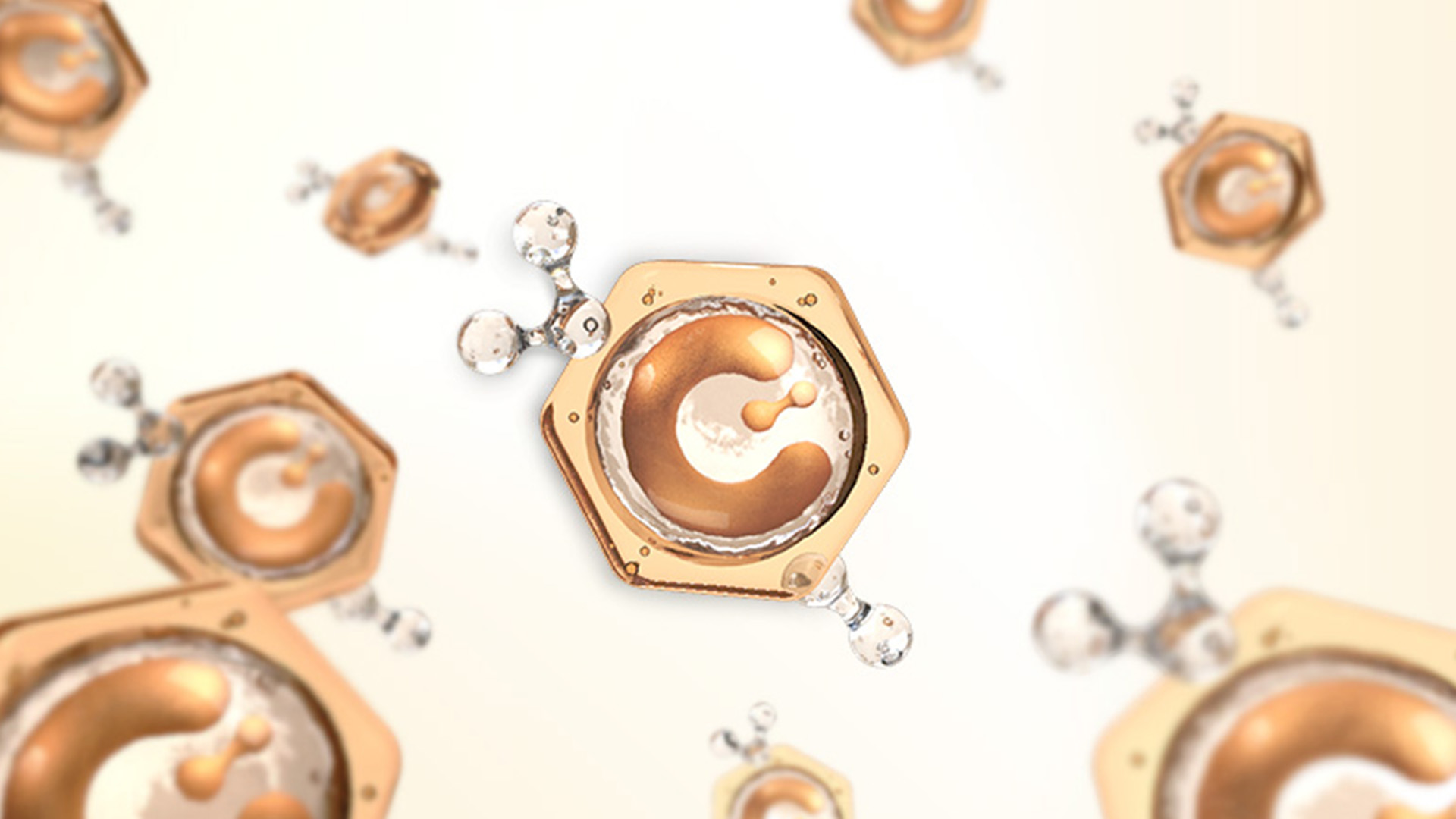Evidence to help you treat eczema :Wasser® Dermatitis Cream
Eczema often manifests with inflammation, redness, swelling, dryness, itching, and pain. Moreover, the skin becomes increasingly thickened and loses its original elasticity and softness due to numerous instances of damage and scabbing, causing significant discomfort. With many products on the market, one brand alone may have developed over a dozen, leaving many patients needing help to make the right choice.
In reality, most skin problems stem from an unhealthy basal layer of the skin. Faced with various symptoms, consumers may throw multiple products into their shopping carts, hoping that applying all of them to their faces at once would solve all their problems. However, this method fails to treat the issues and may worsen skin troubles.
Patients need simple and effective medical products to treat discomfort from eczema. Rather than getting caught up in which skin condition to address first, it’s best to start by improving skin health from the basal layer. This is the most effective way to solve all skin problems.
Wasser® Dermatitis Cream is precisely a product developed with this principle. It strengthens the skin’s condition at a cellular level. It is suitable for patients with various symptoms and ages because it understands that building healthy skin is fundamental and does not mindlessly chase market trends.
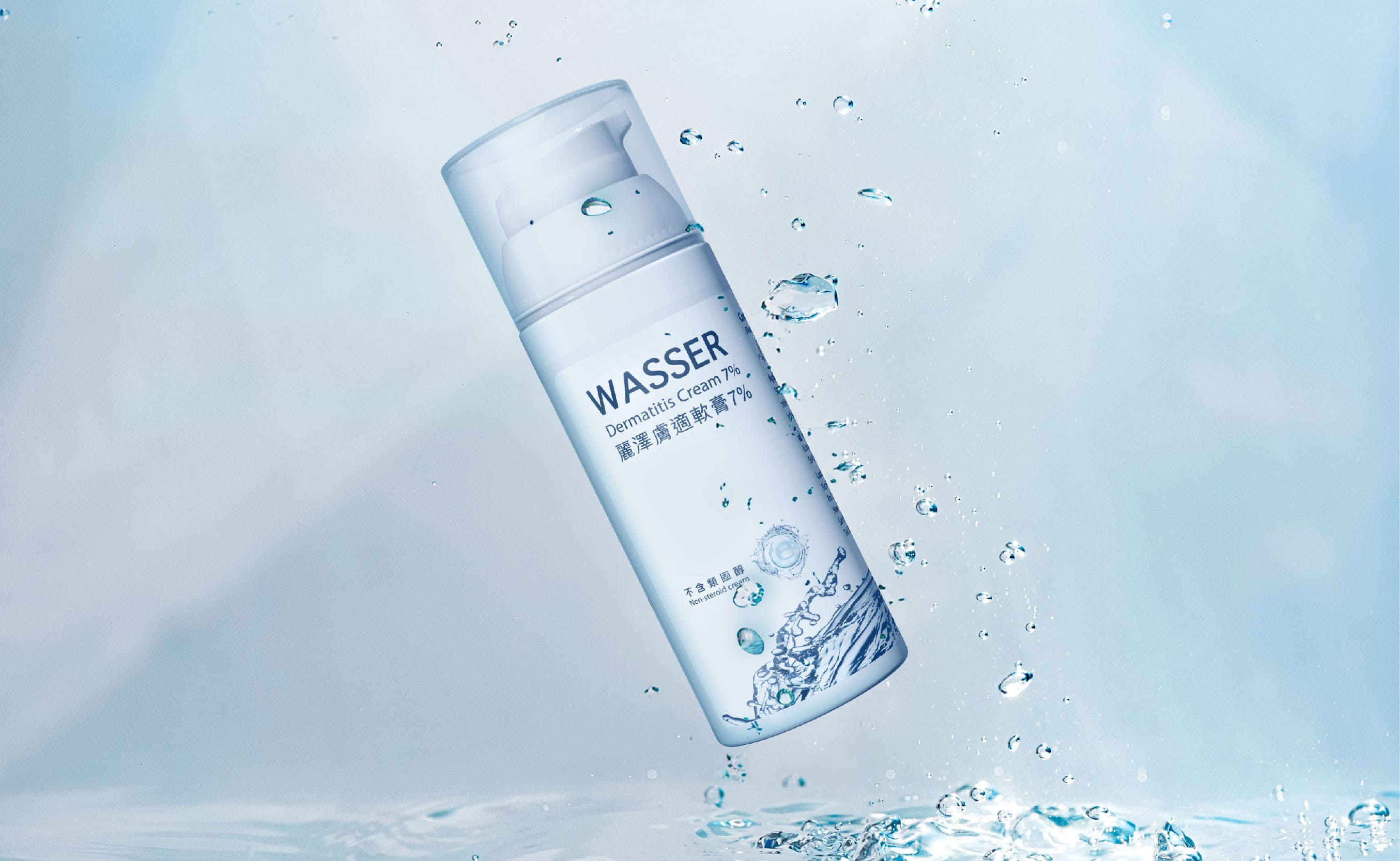
Eczema presents with various issues: redness, sensitivity, and dehydration. Wasser® Dermatitis Cream helps you treat them all at once.
1.Protection of lipid membranes
Cell membranes are lipid double layers with integrated proteins and surface proteins. They possess specific ion channels, transport systems, and receptors responsible for signal transduction. The viability of the cells is highly associated with the efficiency of these systems. Many external factors, like temperature, radicals, pH, UV radiation, and tensides, can disturb the balance of the systems and damage the membrane.
In a red blood cell assay, Ectoin® showed significant protective and stabilizing effects on cell membranes. This assay investigates the denaturing nature of different substances on erythrocytes. Membrane damage leads to a release of hemoglobin and, thus, to a red color in the surrounding media, which can be measured photometrically.
Erythrocytes have been pretreated with 1% Ectoin® or lecithin as positive control for one hour and stressed with different tensides.
The study investigated the concentration and time dependency of this membrane-stabilizing effect of Ectoin®.
The higher the Ectoin® concentration, the greater the protective effect against membrane damage. Prolonged incubation increased membrane stability by 30% after 6 hours and 60% after 24 hours. Thus, the longer the cells are pretreated with Ectoin®, the greater the protective effect.
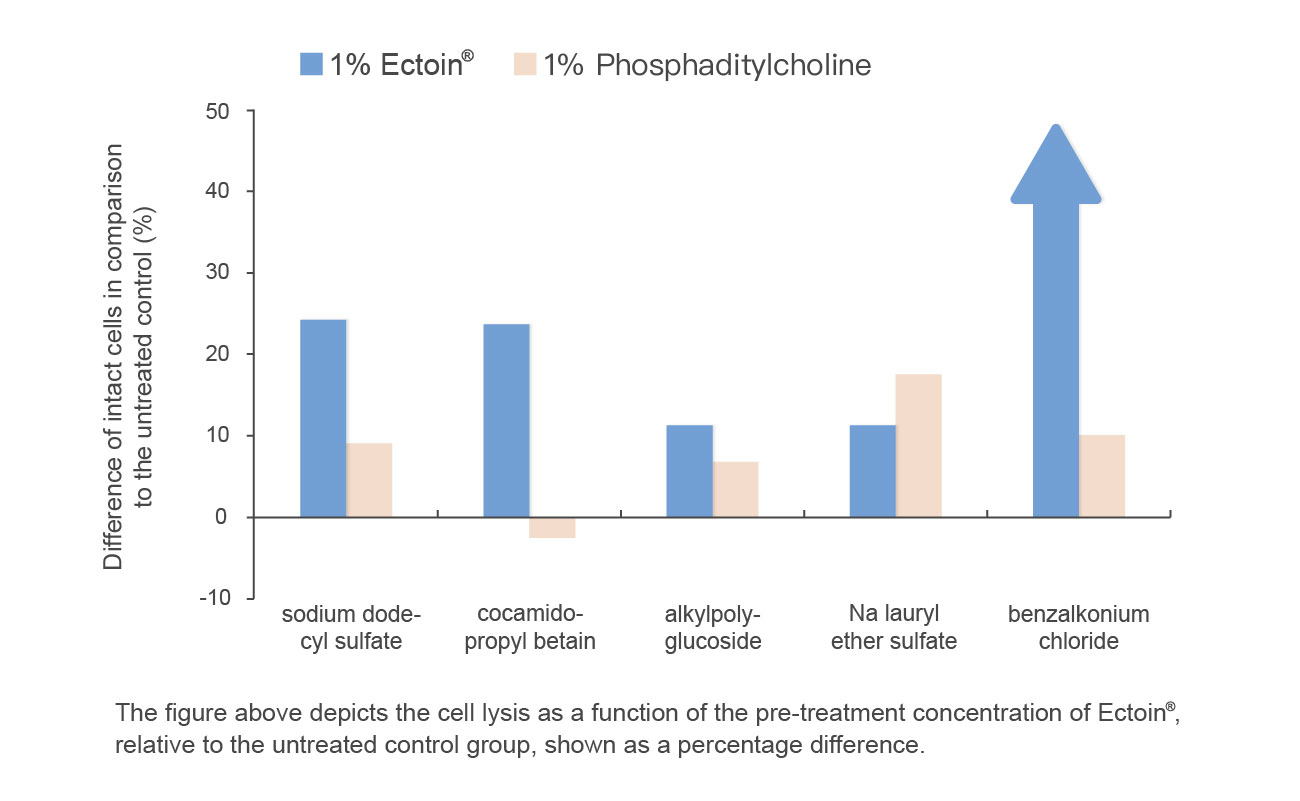
The figure above depicts cell lysis as a function of the pre-treatment concentration of Ectoin® relative to the untreated control group, which is shown as a percentage difference.
2.Decrease of inflammation process caused by external pollutants
The stabilizing Ectoin® Hydro Complex also decreases inflammation caused by external pollutants like UV radiation. The UVA-induced signal transduction is triggered by the release of ceramides (second messenger) in the cell membrane and can be measured by activation of AP-2 and generation of ICAM-1
*The dynamic balance between keratinocyte proliferation and differentiation is crucial in controlling wound healing. If keratinocyte pathology occurs for certain reasons, combined with susceptibility genes in the body, it will induce continuous keratinocyte proliferation, leading to psoriasis.
*In biology, it is an intracellular signaling molecule responsible for signal transduction within cells to trigger physiological changes such as proliferation, cell differentiation, migration, survival, and apoptosis. Therefore, the second messenger is one of the initiating components of intracellular signal transduction.
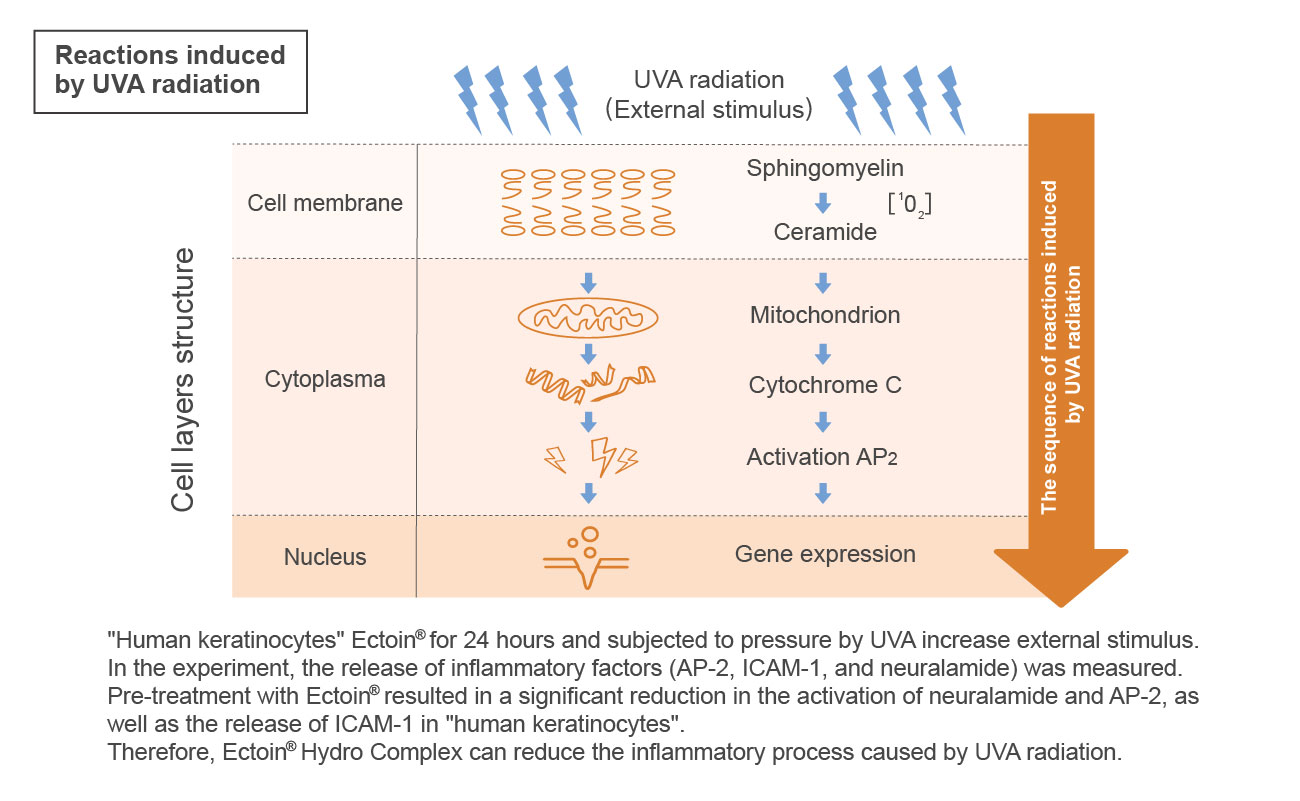
“Human keratinocytes” Ectoin® was used for 24 hours and subjected to UVA pressure to increase external stimulus. The experiment measured the release of inflammatory factors (AP-2, ICAM-1, and neuralamide).
Pre-treatment with Ectoin® resulted in a significant reduction in the activation of neural amide and AP-2 and the release of ICAM-1 in “human keratinocytes.” Therefore, Ectoin® Hydro Complex can reduce the inflammatory process caused by UVA radiation. e.g., lung cells.
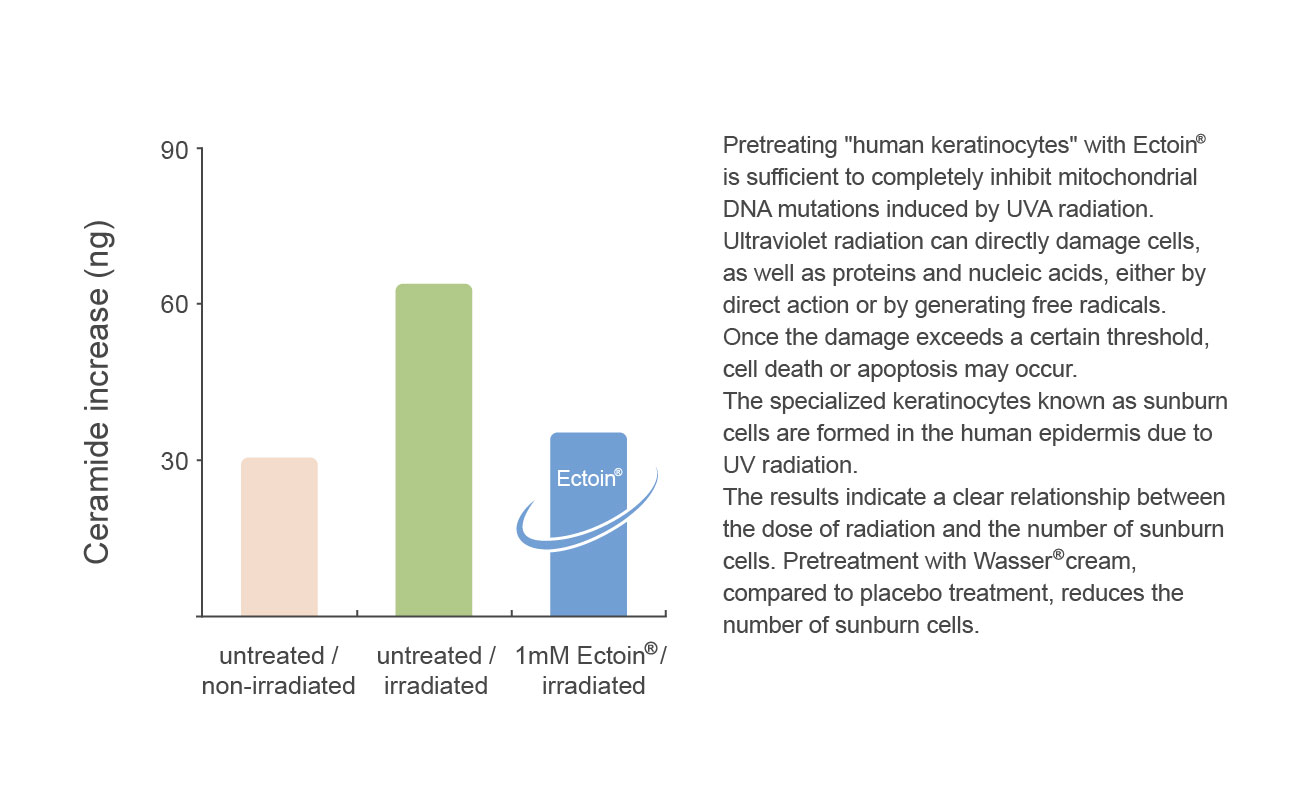
Pretreating “human keratinocytes” with Ectoin® is sufficient to inhibit mitochondrial DNA mutations induced by UVA radiation. Ultraviolet radiation can directly damage cells, proteins, and nucleic acids by direct action or generating free radicals. Cell death or apoptosis may occur once the damage exceeds a certain threshold. Due to UV radiation, specialized keratinocytes, known as sunburn cells, are formed in the human epidermis.
The results indicate a clear relationship between the radiation dose and the number of sunburn cells. Compared to placebo treatment, pretreatment with Wasser® cream reduces the number of sunburn cells.
3.Protection of the immune system of the skin
Langerhans cells are one of the critical components of the immune system of human skin. They are compassionate against external stress factors, like UV stress. Therefore, adequate protection of these cells is critical. Each participant’s forearm was pretreated with Ectoin®cream or a placebo formulation and irradiated with UV after 14 weeks. The number of Langerhans cells was deterred and mined. Under the influence of UV radiation, a significant reduction in the number of Langerhans cells (~50%) was achieved—pretreatment with a placebo led to no significant protection against UV-induced reduction of Langerhans cells. In contrast, pretreatment with 0.3% and 0.5% Ectoin® cream resulted in considerable protection against reducing the number of Langerhans cells.
#Observing Skin Condition by Preventing Water Loss
To show the protection of the human skin barrier function by Ectoin® creams, the influence of different Ectoin® containing formulations on transepidermal water loss (TEWL) was investigated. Five independent studies were conducted with various Ectoin® con- concentrations (1–5%) and over 70 patients. Transepidermal water loss in humans with sensitive and atopic skin was significantly reduced due to treatment with the Ectoin® cream formulation.
*Currently, the method for measuring skin barrier health is non-invasive. The principle involves using precision probes to measure the amount of water loss from the skin over a certain period. The more water lost, the more severe the damage to the barrier. Conversely, less water loss indicates better barrier function.
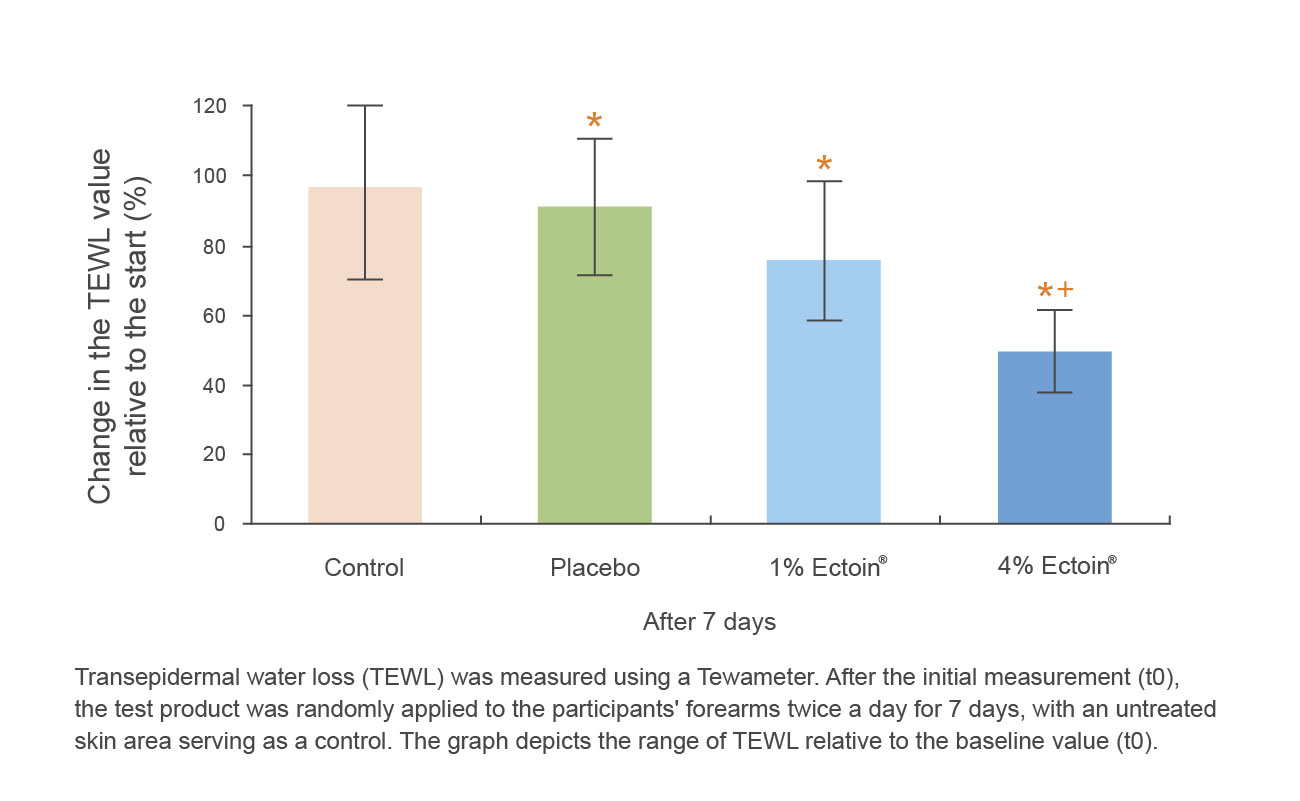
Transepidermal water loss (TEWL) was measured using a Tewameter. After the initial measurement (t0), the test product was randomly applied to the participants’ forearms twice a day for 7 days, with an untreated skin area as a control. The graph depicts the range of TEWL relative to the baseline value (t0).
4.Improvement of skin redness
Three independent studies investigated the influence of the Ectoin® Hydro Complex on skin roughness and scaliness with different Ectoin® concentrations (2% and 5% Ectoin®). Ectoin® reduced skin roughness up to 86% after 3 to 4 weeks of treatment and skin scaliness up to 70% after 3 to 4 weeks. Additionally, the skin of 20 test persons was stressed with SDS, and the erythema was measured. The erythema reduction was determined after 7 days of treatment with a placebo and Ectoin® cream formulation.
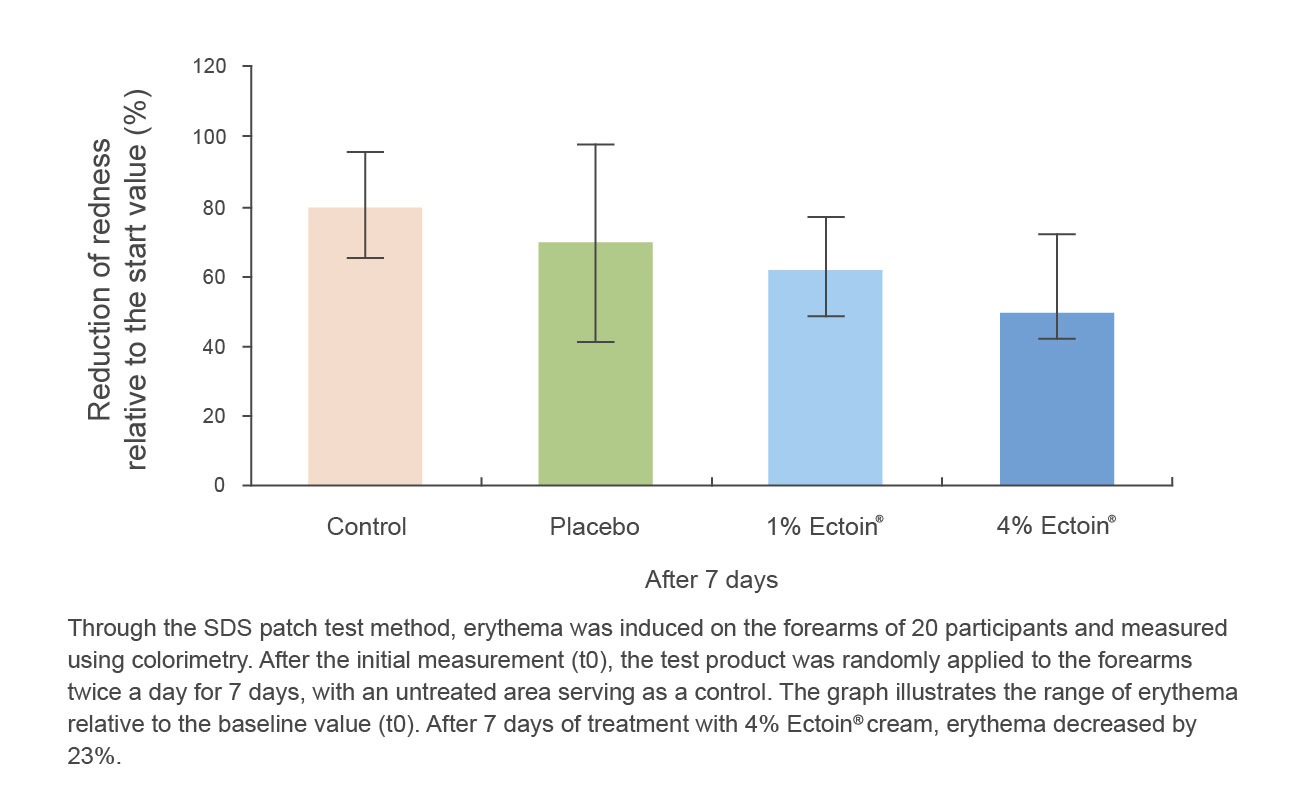
Through the SDS patch test method, erythema was induced on the forearms of 20 participants and measured using colorimetry. After the initial measurement (t0), the test product was randomly applied to the forearms twice a day for 7 days, with an untreated area as a control. The graph illustrates the range of erythema relative to the baseline value (t0). After 7 days of treatment with 4% Ectoin® cream,
erythema decreased by 23%.
5.Enhancement in skin hydration
Ectoin® maintains considerably greater skin moisture than untreated or placebo-treated skin, even after 24 hours. Ectoin® protects skin against rapid dehydration after direct application of hygroscopic silica gel. Skin moisture can be maintained for a longer period by topically app.lying Ectoin®.
In a further series of experiments, the long-term moisturising effect of Ectoin® was evaluated. The test was carried out on the forearm of volunteers. 0.5% and 1% Ectoin® were applied twice a day for 12 days. The skin hydration was measured from day 8 to day 12. On day 12, the application of Ectoin® was stopped for 7 days, detect- ing the skin hydration finally at day 19. After 8 days of application, the hydration increased markedly up to 200% compared with the placebo-treated skin and re-mained constant until the end of the testing period. Although the topical applica- tion was stopped on day 12, the actual hydration status was preserved for further 7 days underlining a significant long-term moisturising effect of Ectoin®.
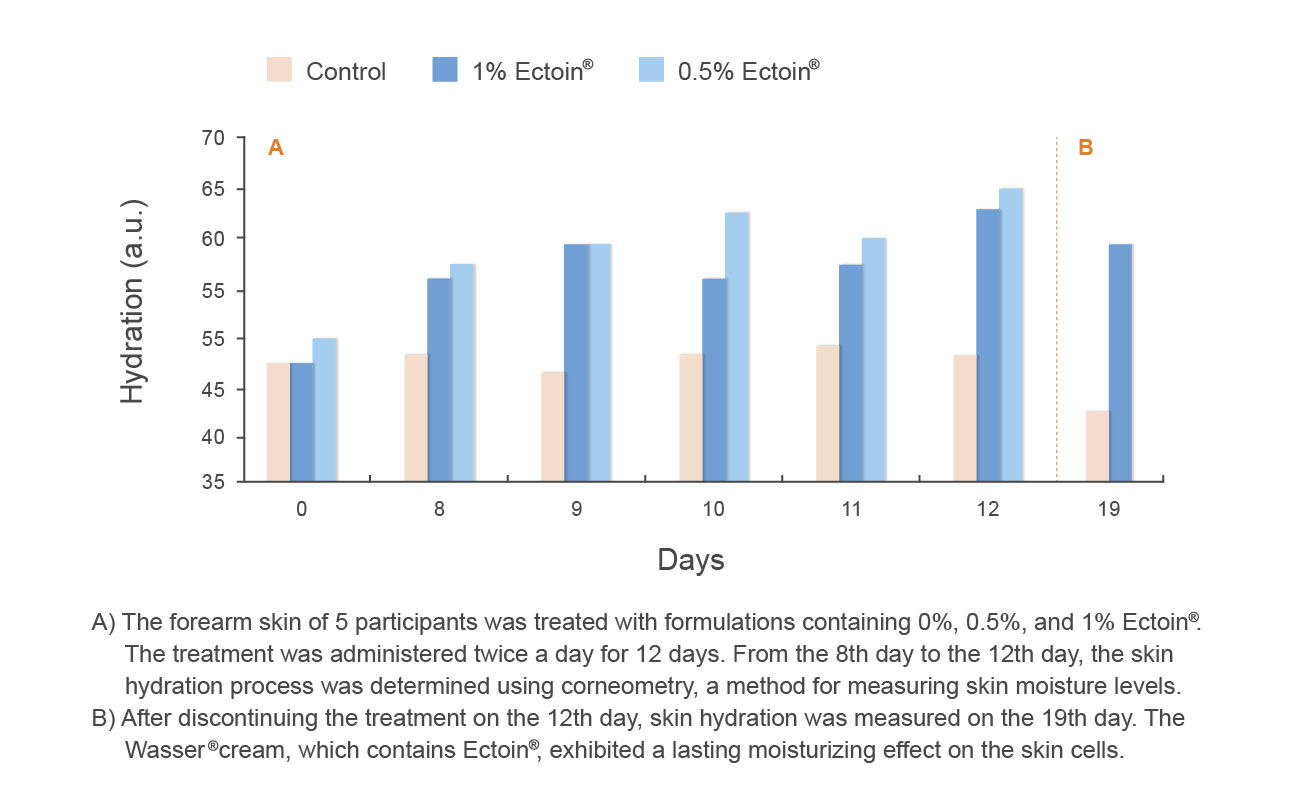
A) The forearm skin of 5 participants was treated with formulations containing 0%, 0.5%, and 1% Ectoin®. The treatment was administered twice a day for 12 days. From the 8th day to the 12th day, the skin hydration process was determined using corneometry, a method for measuring skin moisture levels.
B) After discontinuing the treatment on the 12th day, skin hydration was measured on the 19th day. The Wasser® cream, which contains Ectoin®, exhibited a lasting moisturizing effect on the skin cells.
Relieve eczema with Wasser® Dermatitis Cream 7%!
Ectoin® repairs particles, which can form an efficient barrier to resist the invasion of foreign molecules. In addition, it is added with ingredients such as “Symcalmin,” an oat extract developed in Germany. It is free of steroids, artificial colors, fragrances, and preservatives, suitable for long-term use. It is ideal for all age groups, including infants aged 28 days, and can be applied around the eyes without irritation, relieving itching.
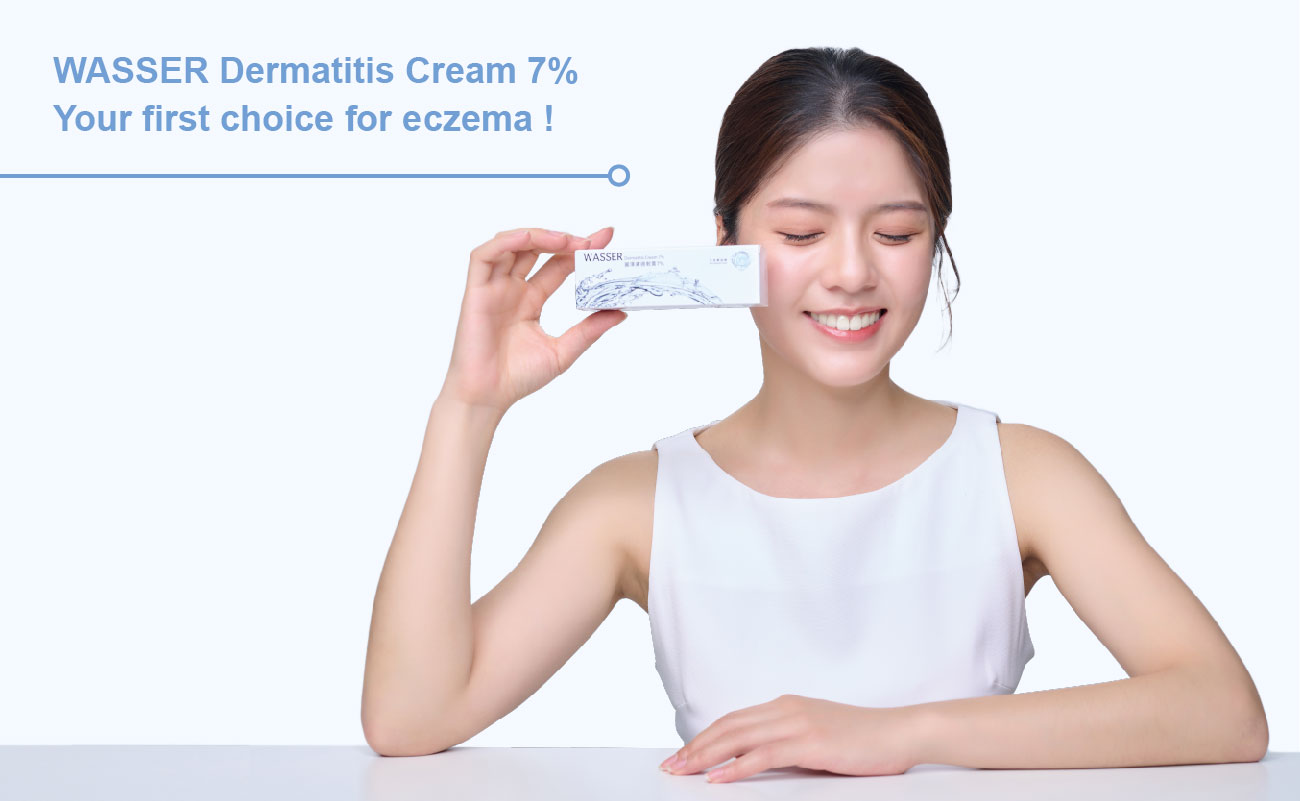
Friendly reminder:
If impairment of the skin condition occurs during treatment, or if the condition does not improve even after long-term treatment, discontinue treatment and consult your healthcare provider.
Friendly reminder:
Consult your healthcare provider or pharmacist for advice before using this product if you are:
1.Pregnant or breastfeeding.2.Infants or children.


